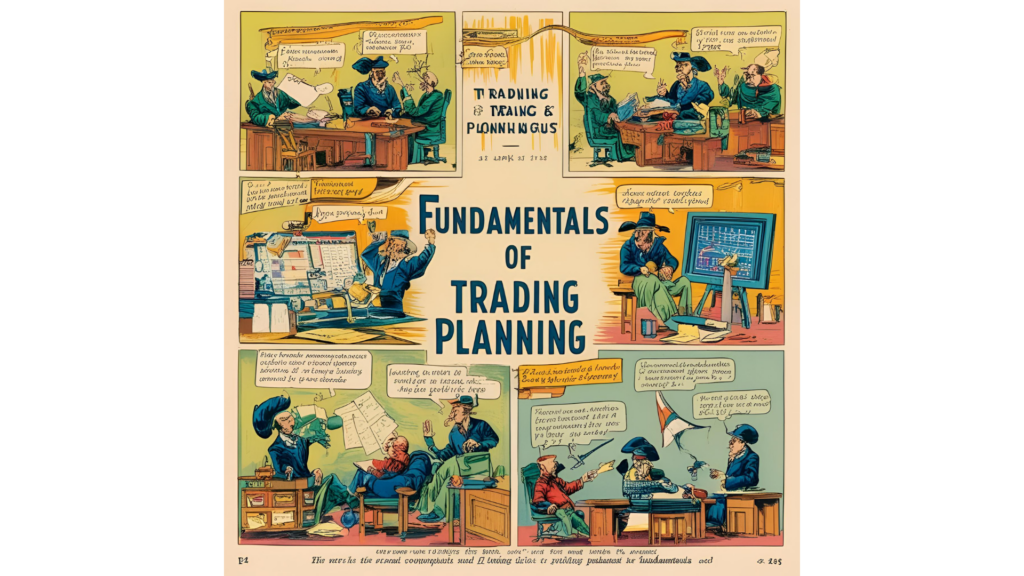Before delving into what planning in trading is, let me provide a definition of abstract planning. By planning, we mean the process of setting goals, developing strategies, and outlining a sequence of actions to achieve them, taking into account available resources, constraints, and potential risks. It includes analyzing the current situation, forecasting future conditions, allocating resources, and monitoring the execution of planned tasks. Planning can be strategic (long-term), tactical (medium-term), or operational (short-term), depending on the time horizon and level of detail.
In general, planning can be described as understanding how to get from point A to point B. For example, when we’re planning a vacation, even before the trip we already know how long the journey will take, how long the vacation itself will be, what mode of transportation we will use, where we will stay, and what we will eat. We leave the choice of excursions, attractions, and the emotions they evoke to chance. If we need to create something, planning only begins once there is a production process in place that takes into account the necessary materials, their processing, cost, and the functionality of the final product.
Of course, one could set out to discover a new America or work on creating a car that runs on water, but in such cases the process itself turns into an adventure, exploration, or invention. In these scenarios, execution timelines, costs, and—most importantly—the final result become uncertain, and operational planning based on the obtained results takes precedence.
Let’s return to trading. At present, planning in trading can be compared to the far side of the Moon—it is rarely seen, and practically nothing is written about planning in this area. Most strategies are based on recognizing a certain pattern and include a recommended profit-to-loss ratio. Depending on the timeframe considered or on that ratio, you fall into categories ranging from scalper to long-term investor. Essentially, you are given a plan for a single trade, while the timeframe for its execution is unknown, and detailed statistics are extremely rare. Thus, we are offered operational planning, sometimes spread out over years, which turns the whole operation into a financial experiment with an uncertain outcome.
The problem you need to solve is formulated simply: how, given an amount S and purchasing power P, can you ensure that you do not lose more than an amount L from the principal S during each time interval T, while still earning a profit s, where s significantly exceeds P.
Before tackling the planning problem, you must master the knowledge of the financial instruments on which you intend to trade. Create for yourself what I call a “market picture”—your own understanding of how prices move. There should be no “gray areas”: every price movement should be accounted for, and you should be able to participate in it.
To clarify, if your trading system is based on selling after the second peak, then the strategy may turn out to be unprofitable, because the price might start declining either after the first peak or after the third. And at the second peak, you will hit your stop-loss exactly for as long as your deposit holds. And once the deposit is wiped out, the two peaks become the best signal to enter a trade again.
It may take a considerable amount of time to study and build this market picture. But remember: market geometry by itself does not make you successful. Next comes the planning stage—the true key to success. And here your mind might truly “boil over,” because you will have to admit that some ideas ingrained in your consciousness do not work and need to be reformulated.
For example, I have come to the conclusion that the trading style (scalping or long-term investing) should be determined solely by the contract size and the market’s liquidity, not by your personal preferences. If you can’t manage to scalp with a deposit of 100 rubles, then buying stocks with that amount for 10 years is almost like playing roulette with the same probability of success. Doubt it? Think of companies like Pan Am or Yukos. A trend is not the direction of the price movement, but rather the state of your account. That is, if your thinking aligns with the market’s movement, you should use every signal to increase and protect your profit; and if the market goes contrary to your expectations, the sooner you exit, the better it is for your account and for you. Setting a profit target in advance that is several times larger than the acceptable loss is like playing for break-even. The journey of a thousand steps begins with the first small step.
This list could continue indefinitely—there are countless approaches. In the market, everyone earns in their own way, but everyone loses approximately the same. Once again, return to the task formulation and create your own strategy in line with these requirements. Or let go of the situation and enjoy the process without worrying about the result.
Sincerely.



